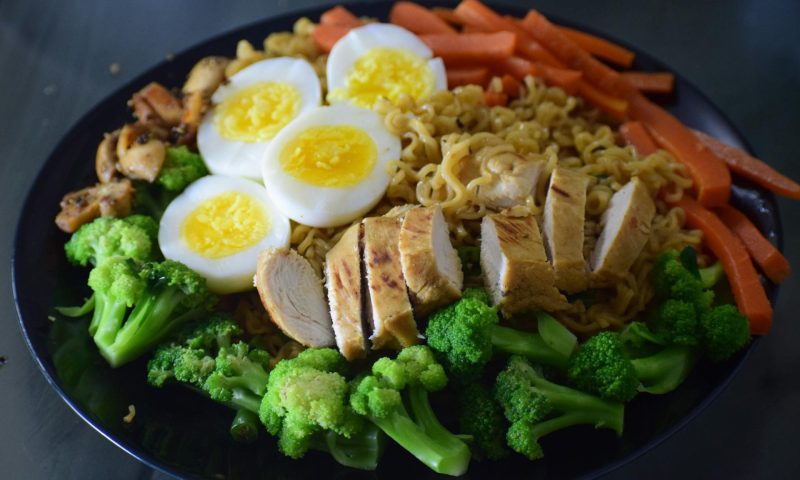A high-protein diet offers numerous benefits, including supporting healthy hormone levels and facilitating muscle-building efforts. As a personal trainer and nutritionist, I encourage all my clients to prioritize protein at every meal, no matter their fitness goals.
While you may be in a solid routine at home when it comes to your meal prep and hitting your daily goals, getting in enough protein while traveling can be a challenge. Keep reading to discover seven high-protein snacks on the go that you can try!
7 high-protein snacks you can buy anywhere

- Beef jerky is a classic high-protein snack that’s lightweight, non-perishable, and easy to toss into your carry-on or backpack.
- Protein shakes come in single-serve bottles or powdered packets that mix with water, making them a convenient option at gas stations and airport shops.
- Protein bars are available in countless flavors and formulas, offering 15 to 20 grams of protein with just a quick unwrap.
- Greek yogurt cups typically deliver around 10 to 15 grams of protein and can be found in grocery stores, airport cafés, and many refrigerated vending machines.
- Packaged hard-boiled eggs are sold in grab-and-go packs in many convenience stores, delivering 6 to 12 grams of protein each without requiring any preparation.
- High-protein cookies offer a sweet satisfaction with a nutritional punch, typically containing 10 to 15 grams of protein per cookie. They are often found in travel-friendly packaging.
- Trail mix is a classic with nuts, seeds, and jerky pieces that supply both protein and healthy fats and is available in pre-portioned bags at nearly every convenience store.
Tips for sticking to a high-protein diet while traveling

- Pack portable options: Bring shelf-stable snacks, such as protein bars, jerky, or trail mix, to avoid relying on less nutritious options.
- Choose protein-rich meals: When dining out, prioritize dishes with lean meats, eggs, dairy, or legumes.
- Stop at grocery stores: Local markets often offer Greek yogurt, hard-boiled eggs, or pre-cooked chicken for quick protein fixes.
- Drink your protein: Single-serve protein shakes or powdered mixes are easy to carry and enjoy anywhere.
- Stay consistent: Aim to include protein in every meal and snack to maintain your energy levels and muscle mass throughout your trip or when you’re on the go.
Is store-bought protein worse than homemade snacks?

Store-bought protein snacks aren’t necessarily worse than homemade options—they’re just different. Many packaged snacks offer convenience, portion control, and accurate nutrition labels, making it easier to track protein intake on the go. However, some store-bought items contain added sugars, preservatives, or lower-quality protein sources.
Homemade snacks give you complete control over the ingredients included, as well as freshness, but they take time to prepare and may not travel as well. If you’re choosing store-bought, look for options with minimal ingredients and high protein content. Both choices can support your goals when selected thoughtfully based on your schedule, preferences, and travel needs.
How much protein should you be eating?

Ultimately, protein needs vary depending on your age, activity level, and goals. The general recommendation is 0.8 grams of protein per kilogram of body weight for sedentary adults; however, active individuals often require more. The NIH shared that “the current RDA for physically active individuals [is] to consume protein between 1.2–2.0 g/kg.”
For example, a 150-pound active person might benefit from 90 to 150 grams of protein daily. Spread your intake throughout the day to support muscle repair, energy levels, and satiety, especially during travel or busy routines.




